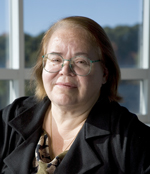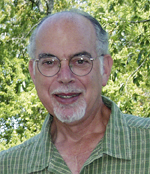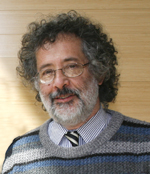Stimulus money fuels research activity on campus
Researchers aggressively pursue federal grants to support projects, buy equipment, and hire students
 |
| Eve Marder |
Brandeis researchers, from biology to women's studies, are taking full advantage of the funding opportunities created by the American Recovery and Reinvestment Act (ARRA), enacted in February to jumpstart the economy. ARRA provided $787 billion, including more than $50 billion for science. Brandeis researchers have submitted 76 proposals, primarily to the National Institutes of Health and the National Science Foundation, for more than $59 million in stimulus funding. So far, Brandeis researchers have won more than $7.5 million in ARRA grants, and many proposals are still pending.
The ARRA proposals submitted were over and above the usual proposal activity, which has averaged about 400 for the past two fiscal years. "The response from our researchers was quick and aggressive," said Paul O'Keefe, assistant provost for research administration. "Stimulus funding was available through a variety of mechanisms, and our people went after pretty much all of them that made sense."
Of 76 ARRA proposals, 35 have resulted in awards. The NIH has funded 30 projects worth more than $6.3 million, while the NSF has given five awards totaling about $1.2 million. Biochemistry, biology, chemistry, mathematics, physics, psychology, and the Heller School have all won grants so far.
In addition to supporting new and ongoing research projects that advance human health and wellbeing, the grants are funding 13 summer undergraduate student researchers over summers 2009-10; new equipment such as sophisticated microscopes; and a new faculty hire.
 |
| Susan Birren |
All of the stimulus money must be spent by 2011 in order to boost the economy as much and as quickly as possible. O'Keefe pointed out that "for the first required reporting to the federal government, we were able to claim almost 16 full-time jobs created or retained with these funds. This is exactly the kind of economic stimulus the act was designed to promote. It's not clear how this will play out for Brandeis over the next couple of years, but we're off to a promising start."
Brandeis investigators continued to submit ARRA-related proposals through August. The university won't have a final tally of grants and dollars until spring 2010, O'Keefe said.
Among the dozens of successful grants are these:
Neuroscientist Eve Marder and colleagues landed a highly-competitive grant for almost $900,000 to hire a tenure track biologist and purchase high-powered new imaging tools to study neural circuitry in the visual cortex. The grant, from the National Institute of Neurological Disorders and Strokes (NINDS), was one of only 17 NINDS grants of this kind offered nationwide.
"Last year across the country faculty searches were canceled or put on hold, as virtually every institution suffered financial and budget difficulties," said Marder. "The NIH recognized that this risked the loss of an entire cohort of exceptionally well-trained and talented individuals at a critical time in their career. Therefore, several NIH institutes, among them NINDS, provided ARRA funds to allow successful institutions to hire tenure-track assistant professors by providing salary and set-up costs for these individuals."
 |
| John Lisman |
Biologist John Lisman won more than $1 million to study the mechanisms of memory storage. The current thinking is that memory is stored by changes in synapses. The grant enables Lisman and his colleagues to test the hypothesis that when a memory forms, a complex is formed between two major proteins of the synapse, CaMKII and a NMDA receptor.
"We are testing whether this complex persists for a long time and whether the complex is necessary for the persistence of the synaptic memory," explained Lisman. "To test this latter idea, we are using drugs that interfere with binding of CaMKII to NMDA receptor. If our hypothesis is correct, these drugs should make the synaptic memory go away. If successful, this work would establish for the first time the molecular basis of synaptic memory. The results could have wide reaching implications for diseases of memory.
Biologist Susan Birren garnered almost $800,000 to further her research into the complex role that the sympathetic nervous system plays in heart disease, hypertension, and sudden cardiac death. Her lab is studying how neurotrophins, proteins that signal nerve cells to grow or differentiate, regulate the release of the neurotransmitters norephinephrine and acetylcholine, and their effect on heart rate. Birren believes that understanding the role of neurotrophins in the development of these neurotransmitter properties could lead to new approaches for the treatment of sympathetic dysfunction in heart disease.
"Our experiments will determine how the balance of excitatory and inhibitory signals to the heart is established during development," said Birren. "This balance is critical for maintaining normal cardiac function in the adult. Understanding the factors and signaling pathways that control the release of the excitatory and inhibitory neurotransmitters may provide new insights into how to control sympathetic drive in the healthy and ailing heart."
 |
| Ricardo Godoy |
"The new grant fills an important gap in U.S. training of graduate students," said Godoy. It allows us to bring some of the top PhD students from across the country to our long-term field site so they can learn first-hand methods of data collection in the field. Students learn not only how to collect systematic data in the field, but also learn how to deal with innumerable logistical and personal problems that arise as fieldwork unfolds."





